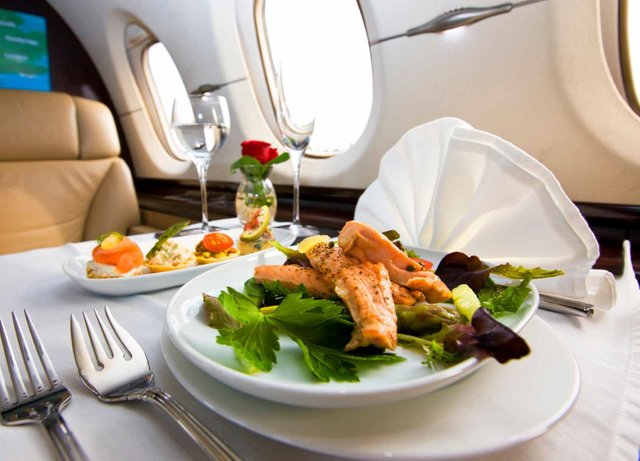Inflight Catering Market Size, Share and Growth Forecast 2025-2033
Market Overview:
The inflight catering market is experiencing rapid growth, driven by premiumization & experiential dining, sustainability & responsible sourcing, and digital integration & personalized services. According to IMARC Group’s latest research publication, “Inflight Catering Market Size, Share, Trends and Forecast by Food Type, Flight Service Type, Aircraft Seating Class, and Region, 2025-2033”, The global inflight catering market size was valued at USD 13.8 Billion in 2024. Looking forward, IMARC Group estimates the market to reach USD 18.7 Billion by 2033, exhibiting a CAGR of 3.39% from 2025-2033.
This detailed analysis primarily encompasses industry size, business trends, market share, key growth factors, and regional forecasts. The report offers a comprehensive overview and integrates research findings, market assessments, and data from different sources. It also includes pivotal market dynamics like drivers and challenges, while also highlighting growth opportunities, financial insights, technological improvements, emerging trends, and innovations. Besides this, the report provides regional market evaluation, along with a competitive landscape analysis.
Grab a sample PDF of this report: https://www.imarcgroup.com/inflight-catering-market/requestsample
Our report includes:
- Market Dynamics
- Market Trends And Market Outlook
- Competitive Analysis
- Industry Segmentation
- Strategic Recommendations
Growth Factors in Inflight Catering Market:
- Premiumization & Experiential Dining
- Sustainability & Responsible Sourcing
- Digital Integration & Personalized Services
Key Trends in the Inflight Catering Market:
- Focus on Health-Conscious and Special Diet Menus
- Technological Integration in Catering Logistics
- Emphasis on Sustainability and Waste Reduction
Leading Companies Operating in the Global Inflight Catering Industry:
- AAS Catering Co. Ltd
- Abby’s Catering
- Cathay Pacific Catering Services (H.K.) Ltd. (Cathay Pacific Airways)
- DO & CO Aktiengesellschaft
- Emirates Flight Catering (The Emirates Group)
- Flying Food Group
- Gategroup
- Jetfinity
- KLM Catering Services Schiphol
- LSG Sky Chefs (Lufthansa AG)
- Sats Ltd. (Singapore Airlines)
- Saudi Airlines Catering
- Universal Weather and Aviation Inc.
Inflight Catering Market Report Segmentation:
Breakup By Food Type:
- Meals
- Bakery and Confectionary
- Beverages
- Others
Meals represent the largest segment as they are essential for enhancing passenger satisfaction and comfort during flights, especially on long-haul journeys.
Breakup By Flight Service Type:
- Full-Service Carriers
- Low-Cost Carriers
Low-cost carriers account for the majority of the market share due to their affordability, leading them to capture a significant portion of the inflight catering market by offering a variety of paid meal options to passengers.
Breakup By Region:
- North America (United States, Canada)
- Asia Pacific (China, Japan, India, South Korea, Australia, Indonesia, Others)
- Europe (Germany, France, United Kingdom, Italy, Spain, Russia, Others)
- Latin America (Brazil, Mexico, Others)
- Middle East and Africa
Asia Pacific enjoys the leading position in the inflight catering market on account of rapid growth of air travel demand, a rising middle class, and the expansion of both full-service and low-cost airlines in the area.
Research Methodology:
The report employs a comprehensive research methodology, combining primary and secondary data sources to validate findings. It includes market assessments, surveys, expert opinions, and data triangulation techniques to ensure accuracy and reliability.
Note: If you require specific details, data, or insights that are not currently included in the scope of this report, we are happy to accommodate your request. As part of our customization service, we will gather and provide the additional information you need, tailored to your specific requirements. Please let us know your exact needs, and we will ensure the report is updated accordingly to meet your expectations.
About Us:
IMARC Group is a global management consulting firm that helps the world’s most ambitious changemakers to create a lasting impact. The company provide a comprehensive suite of market entry and expansion services. IMARC offerings include thorough market assessment, feasibility studies, company incorporation assistance, factory setup support, regulatory approvals and licensing navigation, branding, marketing and sales strategies, competitive landscape and benchmarking analyses, pricing and cost research, and procurement research.
Contact Us:
IMARC Group
134 N 4th St. Brooklyn, NY 11249, USA
Email: [email protected]
Tel No:(D) +91 120 433 0800
United States: +1–631–791–1145
